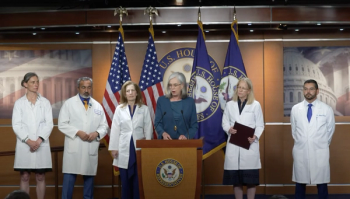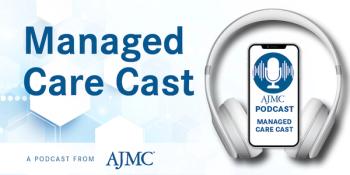
Health System
Latest News

Latest Videos

Podcasts
CME Content
More News

The incidence of small cell lung cancer (SCLC) is projected to drop by 5.9% each year through 2050.

New data show sharp growth in pharmacists’ clinical roles, from the intensive care unit to outpatient chronic disease management, amid staffing and drug shortages.

Democratic leaders assert the Emergency Medical Treatment and Labor Act (EMTALA) remains vital for emergency care, countering confusion from recent policy changes affecting abortion rights and patient safety.

Remote care reduced readmissions and improved functional outcomes in COPD in a recent study.

Andrew Evens, DO, MBA, MSc, deputy director for clinical services and chief physician officer, Rutgers Cancer Institute, introduces New Jersey's new state-of-the-art facilities at the Jack & Sheryl Morris Cancer Center.

The late-breaking abstracts presented on the last day of the 2025 European Hematology Association (EHA) Congress show “what a vibrant clinical specialty we’re in,” according to session cochair Brian Huntly, PhD.

As accountable care organizations’ (ACOs) maturity increased, hospitals participating in CMS ACOs were making progress toward enhanced performance but required more time to improve cost and quality outcomes.

While citing overwhelming barriers patients in rural areas face when accessing care, providers noted the potential of telehealth to improve access in a survey.

A large academic medical center implemented a charitable care formulary with clinical pharmacist oversight, which resulted in more efficient usage of funds and fewer readmissions.

Specialty televisits remain common in the Veterans Health Administration following the COVID-19 pandemic, suggesting they will remain an important ongoing care modality for many patients.

The CDC urges all travelers to be fully vaccinated against measles amid rising cases in the US, some linked with international travel.

This contributor column discusses a recent study that shows the 340B Program’s explosive growth is overwhelmingly due to utilization increases, not price.

Despite holding promise in a range of disease states, a variety of challenges prevent cell and gene therapies (CGTs) from more widespread use, according to a new report from Cardinal Health.

RWJBarnabas Health and Rutgers Cancer Institute unveil the Jack & Sheryl Morris Cancer Center—1 of only 13 freestanding cancer hospitals in the US.

Health technology navigators share perspectives on barriers to and facilitators of digital health access for older, linguistically diverse patients in a Los Angeles safety-net system.

Remote symptom monitoring in cancer care reduces hospitalizations, enhances value-based care, and supports diverse patient populations, according to new findings.

The Maryland All-Payer Model was associated with an increase in population-based rates of elective major joint replacements, with a more pronounced effect observed in Maryland-only hospitals.

Learn about how Allegheny Health Network's "Food as Medicine" initiative tackles food insecurity and enhances health through personalized nutrition support.

Individuals with rheumatoid arthritis face a higher risk of hospitalization for heart failure and pulmonary edema, a new report found.

The National Comprehensive Cancer Network (NCCN) policy summit highlighted the need for improved communication between oncology and primary care to enhance cancer survivor outcomes and care transitions.

Pieter Sonneveld, MD, PhD, chair of the Erasmus MC Cancer Institute, discussed the findings of a study modeling long-term progression-free survival (PFS) in patients with multiple myeloma (MM) treated with a daratumumab quadruplet regimen.

For patients with complex needs and social challenges like unstable housing, the hospital has become their de facto medical home—yet each visit is a fragmented restart, without continuity, context, or a clear path forward.

Researchers are calling for more targeted efforts to improve health equity after a new analysis revealed that cancer symptom documentation and burden vary across certain demographics.

Sleep duration and sleep pattern score were both independently associated with obesity occurrence, and there was a nonlinear relationship between obesity and sleep duration.

While findings around hospital and emergency department use were similar at the individual and neighborhood levels, the use of outpatient services differed.























































